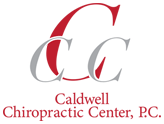Back and Spine Treatment
Schedule A Personalized Consultation Today
Over 30 Years of Experience
Most Insurance Accepted
Effective Treatment for a Range of Back Problems
Causes of Back and Spine Pain
- Osteoarthritis — Nearly everyone over the age of 60 suffers from osteoarthritis (or simply, arthritis). As you age, the cartilage (protective tissue) that covers your joints deteriorates. Discs between vertebrae wear out, and you may develop bone spurs. Your spine stiffens and loses flexibility, and your vertebral joints rub together and cause pain.
- Sciatica — Your sciatic nerve extends down each leg from your hip to your heel. When that nerve becomes compressed or inflamed, we call it sciatica. One or two people in every 100 may experience sciatica. It's a pain that radiates from your back, through your buttocks, and into your lower leg. It may include tingling, numbness, or muscle weakness. Activities that exert pressure on your spine (such as coughing or sneezing) may make it worse. Over time, it can lead to progressive muscle weakness.
- Osteoporosis — As you age, the amount of calcium in your bone decreases. Since your spine is comprised of vertebrae made of bone, the vertebrae may become compressed and undergo structural changes and compression fractures. This is particularly common in women over 50 (one in three experiences it) beginning after menopause, and it can result in the crooked or stooped-shoulder posture called "dowager's hump."
- Herniated disc — Your spinal vertebrae are separated by discs, and normal wear and tear or sudden strain can cause one or more of them to herniate (bulge or rupture). Although the condition is often called a "slipped disc," it's not really a "slip." When a disc herniates, its soft, jelly-like interior protrudes from its normal position between your vertebrae. If that disc places pressure on an adjacent nerve, the result is pain.
- Injuries and accidents — Several factors contribute to being more vulnerable to injuries or accidents, including decreasing muscle tone as you age and shifting in your center of gravity due to increased fat around your abdomen.
- Fibromyalgia — This condition has only recently been identified as a syndrome, and doctors at the Mayo Clinic diagnose around 5,000 people a year with it. It's characterized by achy pain, tenderness, and stiffness in muscles and areas where tendons insert into bones. Pain can worsen with inactivity, and you may feel better with more movement.


Share On: